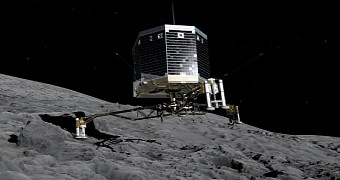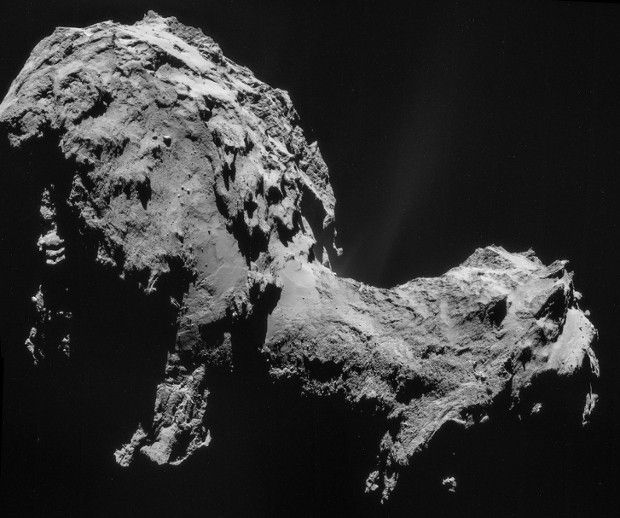Towards the end of last year, on November 12, the European Space Agency's Philae lander broke free from the Rosetta spacecraft and descended onto the surface of Comet 67P/Churyumov-Gerasimenko.
Rather than make a smooth landing, Philae rebounded and drifted for a couple of hours before finally settling into position on the comet's surface.
The moment the space probe first touched ground on 67P/Churyumov-Gerasimenko, its Ptolemy and COSAC sniffing instruments kicked into gear and got to work documenting the chemical makeup of gas and dust on the orb's surface.
A few days after this historic landing, researchers announced that Philae had discovered organic molecules on its target comet. Detailed information, however, was not made available at the time.
Fast forward a few good months, and in a series of papers published in yesterday's issue of the journal Science, European Space Agency specialists explain what it was exactly that Philae found on Comet 67P/Churyumov-Gerasimenko.
Yes, there really are organic molecules on this comet
The dust samples Philae collected when landing on 67P/Churyumov-Gerasimenko were found to contain 16 organic compounds, of which 4 (methyl isocyanate, acetone, propionaldehyde and acetamide) had never before been documented on the surface of a comet.
As for the gas samples, they were found to contain water vapors, carbon dioxide, carbon monoxide, and several other organic compounds, among them formaldehyde.
The reason scientists are psyched about the discovery of these compounds on the comet is that some of them are known to double as building blocks of life, meaning that they are the right ingredients to form more complex structures that could in turn get together to birth life.
“Some of these compounds detected by Ptolemy and COSAC play a key role in the prebiotic synthesis of amino acids, sugars and nucleobases: the ingredients for life. For example, formaldehyde is implicated in the formation of ribose, which ultimately features in molecules like DNA.”
Although there is no evidence that 67P/Churyumov-Gerasimenko might harbor life, the fact that it holds organic compounds means theories that comets seeded Earth with the right ingredients for life could be spot on.

 14 DAY TRIAL //
14 DAY TRIAL // 

